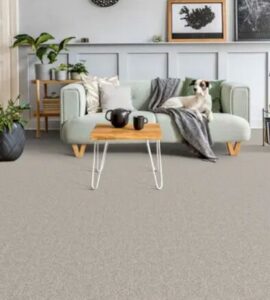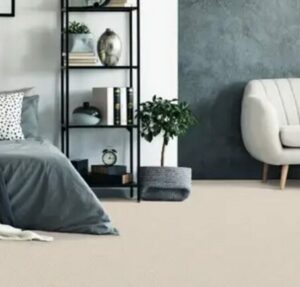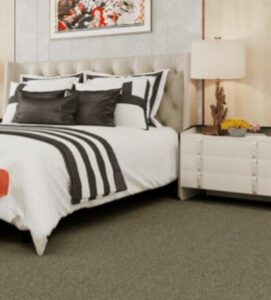Carpeting
Carpeting provides a soft and cozy feel and is a good option for bedrooms and living rooms. Pros include noise reduction and warmth, while cons include the need for regular vacuuming and susceptibility to stains and wear.
Carpeting is a type of flooring made from fibers that are woven together to create a soft surface. It’s available in a range of materials including wool, nylon, polyester, and olefin. Each material has its own unique properties, such as durability, stain resistance, and cost.
The pile height and density of the carpet fibers can also vary, affecting the overall feel and durability of the carpet. A higher pile height can create a softer and more luxurious feel, but can also be more susceptible to crushing and wear over time. A denser carpet, on the other hand, can be more durable and better at hiding footprints and other marks.
When selecting carpeting, it’s important to consider the intended use of the space. For example, a plush, high-pile carpet may be ideal for a bedroom or other low-traffic area, while a low-pile or commercial-grade carpet may be more suitable for high-traffic areas such as hallways and offices.
In addition to its aesthetic and practical qualities, carpeting can also have health benefits. It can help trap allergens and dust particles in the fibers, preventing them from circulating in the air. However, this also means that regular vacuuming and maintenance are necessary to prevent buildup.
Overall, carpeting is a versatile and comfortable flooring option with a range of material and style choices available to fit any space and budget.



